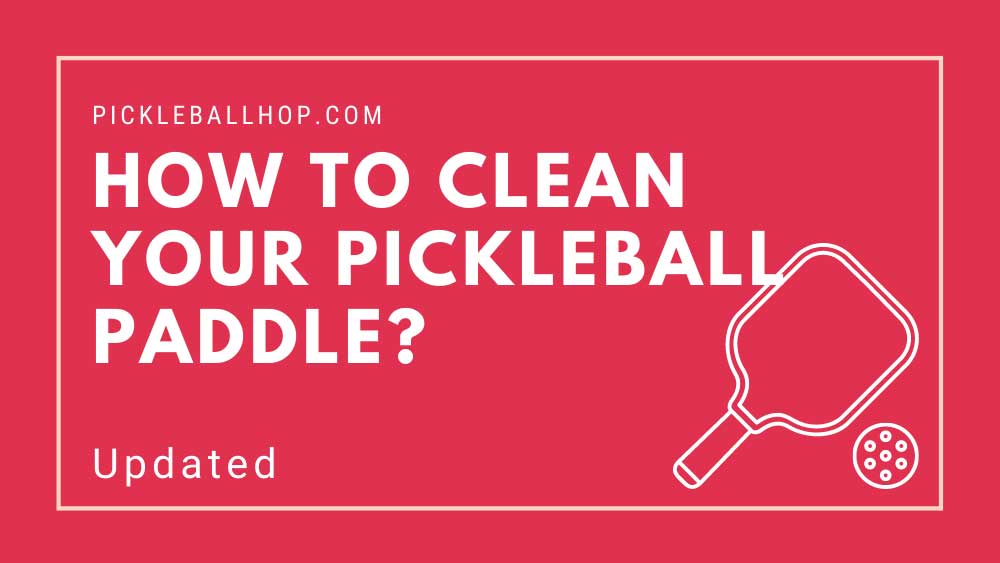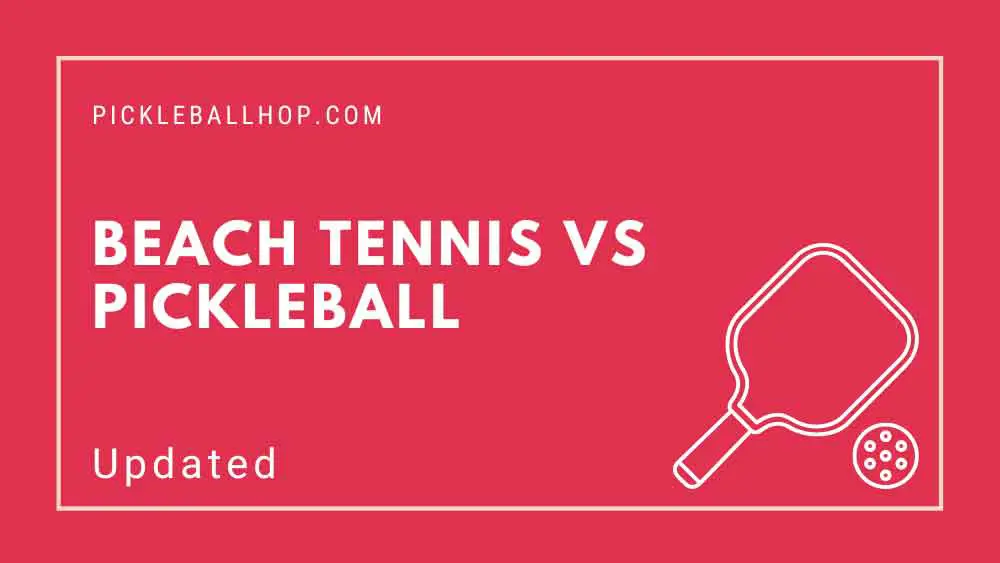The Pickleball kitchen rule, as you know, says that you cannot touch the kitchen line or zone while volleying a ball. This includes your partner, as well as any objects physically connected to you. In addition, you were also thrown into the kitchen by your momentum after you volleyed a ball.
What is the pickleball kitchen rule?
A player is required to hit the volley outside the non-volley zone (the kitchen) in order to comply with the pickleball kitchen rule. Whenever players volley the ball, they cannot step into the kitchen or be in contact with the kitchen line. Stepping into the kitchen must have caused the ball to bounce. You may enjoy reading Is Pickleball an Olympic Sport?
Here’s what’s going on:
Pickleball’s kitchen rule is a bit more complicated and is composed of eight rules that are grouped together as a single rule.
It’s hard for people to keep track of the rules in the kitchen since they’re unfamiliar with the concept.
In the following article, we’ll explain how to simplify the pickleball kitchen rule so that you won’t break it when on a court.
Here are Five Important Pickleball Kitchen Facts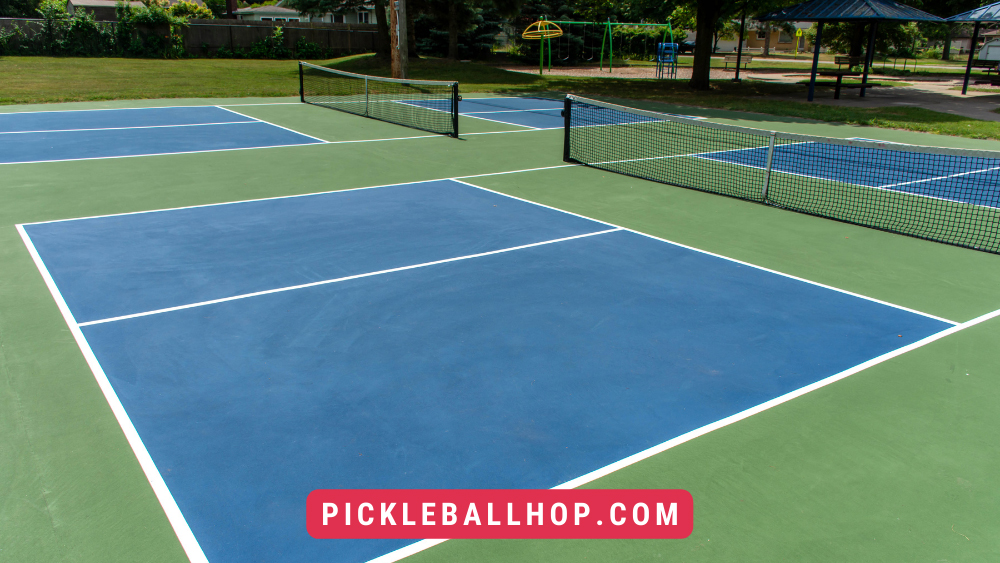
- Kitchens are formally referred to as Non-Volley Zones (NVZ) but are more commonly referred to simply as the kitchen. I will refer to it here as the kitchen for simplicity’s sake.
- In a kitchen, there is a 7-foot-deep area on either side of the net that extends the entire width of the court. It is located on either side of the net.
- Kitchen lines are 2 inches thick as are all pickleball court lines; they are considered part of the kitchen. This is important to understand.
- To prevent players from hitting the ball directly over the net, the kitchen rule exists. In the absence of the rule, a pickleball match or game would be difficult to play fairly and reasonably allowing for more than just smashing the ball over the net and into your opponent’s racket.
- Kitchens are the ground, not the spaces above them. It is legal to have your paddle over the kitchen line when volleying a ball, but you cannot touch the line or stand inside the kitchen while doing so.
You may enjoy reading What Is The Kitchen In Pickleball?
Pickleball Terms
To help you learn about kitchen rules, here are two more terms that might be helpful:
Volley
Volleying is when you strike the ball before it bounces.
Dinking
The term “dinking” refers to bouncing the ball once over the net and then returning it.
A dink or lob over the net is a very strategic part of a pickleball game since it prevents your partner from smashing the ball back to your side. You can read a guide on What is a Dink in Pickleball?
You can help yourself win more games and points by strategically placing or dinking the ball to your opponent’s side.
Pickleball Kitchen: What Is It?
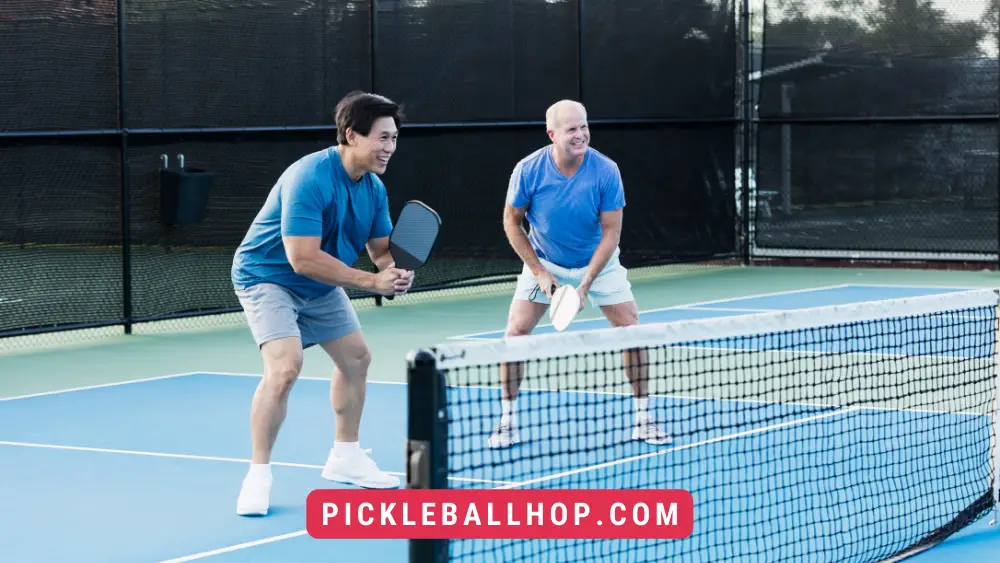
Non-volley zones (NVZs) in pickleball are defined by parallel lines drawn on both sides of the net and 7 feet from it on both sides on each sideline. These lines make up the kitchen.
In the kitchen, the idea is to eliminate those types of hits that you see in other sports, such as badminton, tennis, squash, or racquetball, by providing a well-balanced system of movement. Having a smash hit close to the net puts the opposing team at an immediate disadvantage because of the quick, hard hit.
Originally, Joel Pritchard, Bill Bell, and Barney McCallum created pickleball so it could be an easy game for the majority of people to play and the ball could be hit with pickleball paddles without having to worry about constant hard hits interfering with play.
The non-volley zone was created, as well as the “dink” hit, whereby the ball is lobbed over the net while close to the net, either from inside the kitchen zone (if the ball has bounced) or from behind the line. Having a “dink” rally can make a pickleball game very strategic and interesting.
In defining the pickleball kitchen rule, it is important to remember that it pertains to the physical ground and not to the physical space above. Pickleball paddles may be used to hit a volley shot over the kitchen area if you stand outside the kitchen zone (and not on the kitchen line).
You may enjoy reading Why Is It Called The Kitchen In Pickleball?
Summary of Pickleball Kitchen Rules
Essentially, the kitchen rule states that a player cannot:
- Touch the kitchen line or be in the kitchen.
- Involve any part of their body or any object they are in contact with in any way, whether it is touching the kitchen line or their partner or paddle physically being in the kitchen.
- To allow the player to swing, follow through, or to touch the kitchen line to hit the ball. When you lean in to hit a volley, you don’t need to worry about your paddle hitting the ground, because your paddle sits above it.
Essentially, the kitchen rule means that you should always stay out of the kitchen area and behind the kitchen line.
A look at the pickleball kitchen rules
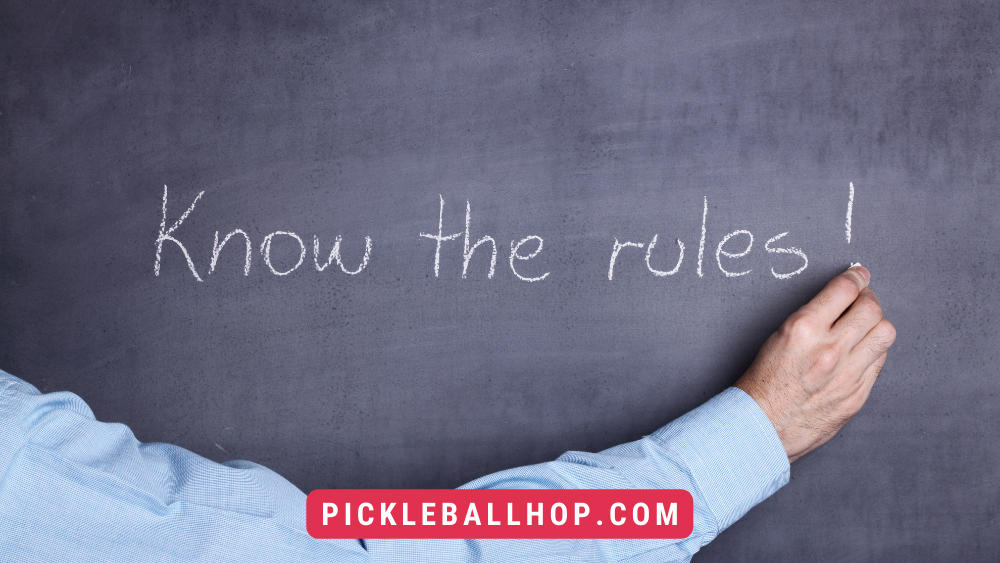
We have included further explanations of the official kitchen rules from the USAPA Rule Book if you wish to learn more about them.
Rule 9.A:
The non-volley zone is the only area in which volleys can be initiated. Wheelchair users may experience a non-volley zone contact when they use their front wheels.
This one seems clear to me. The players must stand outside the kitchen so they can volley the ball (hit the ball before it bounces) without touching the kitchen line or being inside. It gets more complicated as you read, even though it appears simple.
Rule 9.B:
While volleying, it is a fault to touch the non-volley zone with the volleying player or with any objects that have contact with the volleying player while in the act of volleying.
9.B.1. Volleying is an action that involves swinging, following through, and gaining momentum from the movement.
9.B.2. During the volley motion, if the paddle touches the non-volley zone before or after contact with the ball, it is considered a fault.
It’s tricky, isn’t it? This rule says that you cannot volley with your feet in the kitchen or on the kitchen line. Your paddle, your hands, etc. are all considered to be part of your body. Then, if you volley the ball and then drop your paddle or anything else around the kitchen after the volley, you have committed a fault.
Rule 9.C:
9.C. The player incurs a fault if their momentum causes them to make contact with anything that is touching the non-volley zone, including their partner.
9.C.1. The ball is considered dead even if the player reaches the zone before declaring it dead.
There is no doubt about it, this is serious business. Keep out of the kitchen. Always. Except when you know the ball has bounced.
It is a fault if you put your paddle in the water after losing your balance during a volley or land in the kitchen.
In addition, if it’s dead, it’s a fault.
Rule 9.D:
A player may not volley a return if his or her feet have touched or entered the non-volley zone or if the player has touched the non-volley zone in any other way. In other words, you cannot stand in the non-volley zone, jump to hit a volley, and then land outside the non-volley zone
Always stay out of the kitchen. If the ball hasn’t bounced yet.
Thus, you cannot start or end volleying in the kitchen and you cannot land outside of the kitchen. That is a mistake.
We seem to be repeating ourselves a lot.
Whenever you volley the ball, make sure that both feet are on the ground and that you have moved outside the kitchen and off the kitchen line before starting the volley.
Rule 9.E:
In the non-volley zone, players may enter at any time other than when they are volleying the ball.
Rule 9.F:
If a player returns a ball that bounces, he or she may enter the non-volley zone.
Rule 9.G:
To return a ball that has bounced, a player can stay inside the non-volley zone. Players do not violate the non-volley zone if they do not exit the non-volley zone after hitting a bounced ball.
That’s right, we’re saying it again. If you don’t see the ball bounce, stay out of the kitchen.
Rule 9.H:
In this situation, the player is not in violation if the ball is returned to their partner while they are standing in the non-volley zone.
Knowing this is a good idea.
In our experience, there have been some players who believed that both players should stay out of the kitchen when a player hits a volley shot.
As long as the player who is not hitting the ball does not come into contact with the player who is in the kitchen, it is okay for them to be in the kitchen.
What you can do in the kitchen?
It’s your choice! As long as you don’t initiate or volley the ball.
A short dink is often returned by players hopping into the kitchen. As long as the ball bounces first, this is fine. Being in the kitchen can also mean that you’re a sitting duck, so beware. Standing in the kitchen automatically causes you to commit a fault when you volley. It is also necessary to let the ball go before volleying it in order to avoid volleying. That is to say, you are in an impossible situation. You should leave the kitchen as soon as possible if you need to go into it!
Pickleball will make your kitchen seem like an endless pit of lava once you begin playing more. Do not be afraid to go into the kitchen if you need to get out, but don’t get caught by surprise! The kitchen is a great place to practice groundstrokes. Keep calm, make a balanced and calculated stroke, and wait for them to bounce.
Toe the line
In light of these facts, you may be wondering, “ What should I do if the kitchen is so dangerous? ”
It will depend on the situation on the court, but you’ll generally want to be close to the kitchen without being on the line when the game is going well. During consistent dinking rallies, this is especially true. It’s called “toeing the line”.
Especially if you’re a beginner, this will take some practice. While playing, it is very easy to lose track of where the kitchen is. As you play more, you’ll eventually be able to recognize an imaginary wall that prevents you from entering. Practice will make it easier.
If you’re a beginner, make sure you run up to the kitchen line often. You’ll get better practice dealing with kitchen rules when you play this way, as well as learn how to play the game correctly.
FAQs of pickleball kitchen rule
What is the ball’s maximum distance from the non-volley zone in pickleball?
If the ball bounces, pickleball players can hit the ball outside the non-volley zone.
How do you refer to a non-volley zone?
The non-volley zone is also known as the “kitchen”.
Is it possible to play pickleball in the kitchen?
If you are playing pickleball, you can go to the kitchen at any time, but you cannot volley the ball while in the kitchen. In other words, if the ball bounces, you can hit it from the kitchen.
In pickleball, what is the kitchen?
Pickleball’s kitchen is that area on both sides of the net that is 7 feet from the net and connects to both sidelines. Originally, this area was called a non-volley zone. It is not allowed for players to volley the ball while standing on the kitchen line or in the kitchen.
When will I be able to hit a volley once again if I’m in the kitchen?
Before you can once again volley the ball, both feet must be outside the Non-Volley Zone.
Final Thoughts – Pickleball Kitchen Rules
Yes, we hear ourselves saying it again. Always stay out of the kitchen. It is impossible to tell if the ball has bounced unless you know it has.
Pickleball’s kitchen rule is without a doubt one of the trickiest and most misunderstood rules. To master a rule, you must practice it and keep an eye on it constantly so that you don’t earn faults and lose games.
Read our article 5 Pickleball Rule Surprises to learn more about other misunderstood pickleball rules. Here is a video that explains the kitchen rule that is worth watching.

